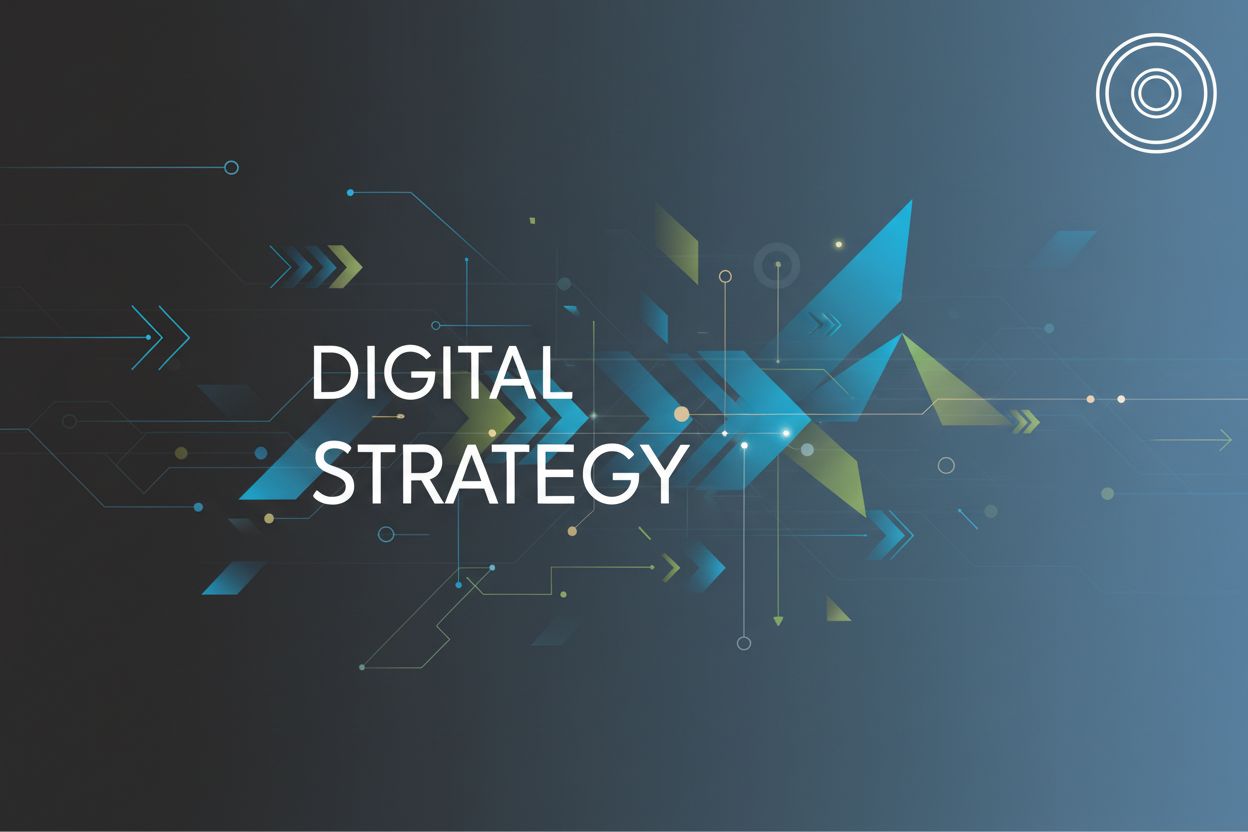What is Digital Marketing?
TL;DR
Understanding the Core Components of Digital Marketing
Alright, so you're diving into digital marketing? It's not just slapping ads online and hoping for the best, trust me. There's actually some strategy involved, and it all boils down to a few core things. Think of it as a three-legged stool – you gotta have all the legs to sit comfortably, otherwise, you're gonna fall flat!
First up, it's lead generation. This is all about attracting the right people to your brand. Think of it as fishing – you need the right bait to catch the right fish, you know?
- You have to know who you're trying to reach. What are their interests? Where do they hang out online? Basically, get into their heads.
- seo is your friend here. You want your site to pop up when people search for stuff related to your business. It's like having a prime spot on a busy street.
- And then there's sem, which is basically paying to show up at the top of search results. It's faster than seo, but you gotta keep paying to stay there.
- Don't forget those social media ads, you can target people based on all sorts of things – their age, location, interests... It's highly effective because it allows for precise audience segmentation and leverages behavioral data.
So, you've got people coming to your site – great! But what next? You need to capture their info and turn them into leads. Think of this as setting a trap (in a good way, of course).
- Your website needs to be easy to use and designed to get people to take action. It's like a well-organized store that makes it easy to find what you need.
- Create specific landing pages for different campaigns. Don't just send everyone to your homepage – that's like inviting them to a party and then leaving them in the hallway.
- Use forms strategically to collect info. But don't be too pushy! Offer something valuable in return, like a free ebook or a discount code.
Now, this is where the magic happens: lead nurturing. It's not enough to just get someone's info – you need to build a relationship with them and guide them towards becoming a customer.
- You'll need a martech stack that helps you manage all your leads and communications. Think of it as your digital marketing control center. Examples include CRM systems (like HubSpot or Salesforce), email marketing platforms (like Mailchimp or Constant Contact), and marketing automation software.
- Create nurture campaigns with relevant content that's sent out automatically based on what your leads do. It’s like having a personal assistant who knows exactly what each person needs.
- And don't forget personalization! Use the data you have to make the experience unique for each user. It's like knowing their favorite drink and having it ready when they walk in the door.
Customer Conversion is the ultimate goal after nurturing. This is where your efforts pay off, and a qualified lead officially becomes a paying customer. It's the culmination of all the previous steps, transforming interest into action.
- Timing is Crucial: Conversion often happens when a lead is ready to buy, and your nurturing has positioned your brand as the best solution.
- Clear Calls to Action: Make it obvious what you want them to do next – "Buy Now," "Sign Up," "Request a Demo."
- Streamlined Purchase Process: Remove any friction from the buying journey. A complicated checkout can lose you a customer right at the finish line.
- Reinforce Value: Remind them why they're making this purchase and the benefits they'll receive.
Let's say you're running a small healthcare clinic. You could use seo to rank higher for local searches like "best doctor near me." Then, create a landing page offering a free consultation and use a form to capture contact info. After that, you can nurture leads with emails about the benefits of your services. It's all about attracting, capturing, nurturing, and finally, converting – in that order.
Or think about a retail company. They might use paid social ads to target people interested in fashion, then send them to a landing page showcasing their latest collection. After capturing their email, they can send personalized offers and style tips to encourage a purchase.
One thing, though: remember to be ethical. Don't spam people, be transparent about how you're using their data, and always give them the option to unsubscribe. It's about building trust, not tricking people, that's important.
So, that's digital marketing in a nutshell: Generate, capture, nurture, and convert. Get those four things right, and you're well on your way to digital marketing success. Now, let's dig into some specific digital marketing tactics and strategies...
Key Digital Marketing Tactics and Strategies
Alright, let's talk digital marketing tactics. I mean, it's not just about knowing the lingo, right? It's about doing something with it. Did you know that it's estimated that global spending on digital marketing tactics is approaching $100 billion? That's a lot of money, so you wanna make sure you're spending it wisely.
Think of content marketing as becoming the go-to source for your audience. It's not just about throwing up product descriptions; it's about creating stuff people actually want to read, watch, or listen to.
- Value is King: The goal is to have readers take action toward becoming a customer, such as requesting more information, signing up for an email list or making a purchase.
- Formats Galore: Blog posts, videos, podcasts, infographics—mix it up! Each format speaks to different people.
- SEO is Your Wingman: Integrate those juicy keywords without sounding like a robot.
- Measure, Tweak, Repeat: Dig into those analytics to see what's working and what's flopping.
Don't count email out that's for sure. It might seem old-school, but it's still a direct line to your audience. And it's cheap!
- Build That List (Ethically!): Opt-in subscribers are gold. Don't buy lists; nobody likes spam.
- Compelling Campaigns: Subject lines are your first impression. Make 'em count.
- Personalize, Personalize, Personalize: Use their name, reference past purchases—make them feel special.
- Segment Like a Pro: Not everyone wants the same thing. Group your audience based on interests, behavior, etc.
Social media is where you build relationships, not just blast ads. It's about fostering interaction and creating a community around your brand. It's a conversation, not a monologue.
- Strategy First, Posting Later: What are your goals? Who are you trying to reach? Tailor your approach to each platform.
- Content is Still King (But Context is Queen): What works on TikTok won't fly on LinkedIn. Know your audience and the platform's vibe.
- Community Building: Engage with comments, run polls, and ask questions. Make people feel like they're part of something.
- Analytics are Your Secret Weapon: Track what's working and what's not. Don't be afraid to experiment.
There's also GetDigitize. They're an example of a full-service agency that focuses on the whole brand picture, helping businesses establish and enhance their presence across various digital touchpoints. They offer services like:
- Brand strategy and identity development
- digital and social media marketing campaigns
- website and ui/ux design, cms management
- copywriting and content planning
- product design and packaging, advertising campaigns
Here's a simplified example of how you might track user interactions on a landing page using JavaScript, like when someone submits a form:
document.addEventListener('DOMContentLoaded', function() {
const contactForm = document.getElementById('contactForm'); // Assuming your form has an ID of 'contactForm'
if (contactForm) {
contactForm.addEventListener('submit', function(event) {
event.preventDefault(); // Prevent default form submission to handle it with JavaScript
console.log('Contact form submitted!');
// Here you would typically send the form data to your server
// For example:
// const formData = new FormData(contactForm);
// fetch('/submit-contact', { method: 'POST', body: formData });
alert('Thank you for your submission!');
contactForm.reset(); // Reset the form after submission
});
}
});
This code snippet listens for the page to load, then looks for a form with the ID 'contactForm'. If it finds it, it adds an event listener for the 'submit' event. When the form is submitted, it prevents the default browser behavior, logs a message to the console, and shows an alert to the user. This is a basic example of how you can track user interactions like form submissions, which is crucial for understanding lead generation and conversion rates.
Let's say a local bakery wants to boost sales. They could use content marketing to share recipes and baking tips on their blog. Then, they could use email marketing to send out exclusive coupons to their subscribers. And social media? Show off those drool-worthy pastries.
Or, imagine a software company. They could create a series of webinars on industry trends (content marketing). Then, they could use targeted LinkedIn ads (social media marketing) to reach potential clients. And follow up with personalized emails (email marketing) to nurture those leads.
Remember, digital marketing isn't magic. It takes time, effort, and a willingness to learn. And don't be afraid to get a little creative. The internet is a crowded place, so you need to stand out from the noise.
Now that we've covered some key tactics, let's dive into the importance of having a well-defined strategy...
The Impact of Digital Marketing on Brand Building and Customer Engagement
Alright, so you've got the basics of digital marketing down. But how does it actually impact your brand and get customers hooked? It's not just about being online; it's about making a real connection.
Think of brand awareness as your digital reputation. It's how many people know about you and what they think when they hear your name. You want them to think "quality" or "innovative," not "who?"
- seo and sem are your power tools. You have to show up when people search for related stuff. According to Digital marketing, search engine optimization techniques improve business websites and brand-related content visibility for common industry-related search queries.
- Social media expands your reach. It's not just posting pretty pictures; it's about getting your brand in front of new eyes.
- Content that connects. Create stuff that resonates with your audience. What problems do they have? How can you help? This could be anything from relatable memes that capture your brand's personality to behind-the-scenes glimpses that humanize your business.
Engagement is more than just likes and shares; it's about sparking a conversation.
- Personalization is key. No one likes generic emails. Tailor the experience to each customer.
- Content that solves problems. Provide value beyond just selling your product. This means offering tutorials, guides, or solutions to common pain points your audience faces.
- Interact and respond. Be active on social media and address customer questions.
It's not enough to just "be online." You need to track your results and see what's working. This is where understanding your key performance indicators (KPIs) and analytics becomes vital. By tracking these metrics, you can see which strategies are effective and where you can improve.
- KPIs are your guide. Website traffic, lead generation, conversion rates – know your numbers.
- Analytics tools are essential. Understand where your traffic is coming from and what people are doing on your site.
- Attribute revenue to campaigns. Figure out which marketing efforts are actually driving sales.
As the folks at Oracle put it, digital marketing KPIs help you "measure marketing campaign performance" and understand "what strategies worked."
Let's say you're running a local bookstore. You could use seo to rank higher for searches like "best mystery books near me." Then, use social media to host live Q&A sessions with authors. After that, track website visits and online sales to see how your efforts are paying off.
Or, you're a financial advisor. Use content marketing to create blog posts about retirement planning. Then, use email marketing to send personalized advice to your clients. You can also use linkedin to reach potential clients and share industry news.
Digital marketing isn't rocket science, but it's not a free-for-all either. It's a mix of strategy, creativity, and a willingness to adapt. So, get out there, build your brand, and connect with your audience.




